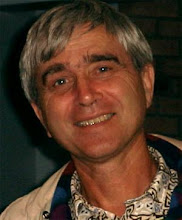
This picture is of the skylight with one piece of plywood installed in the well.
Well I got a little help to install a skylight right over the "lathe nook". Does it ever make a difference! Very nice and bright down there now.
I purchased a discontinued model skylight from Home Depot for $50. Also got some sticky one side tar film by Velux. I laid down the film around the opening, applied a bead of roof mastic and set the skylight onto the mastic. Then screwed it down with 1 1/2 #8 deck screws. The skylight was the type that needed no additional flashing but I still applied a layer of the velux film over the edge of the skylight to ensure a waterproof installation.
Certainly no leaks so far and we have had quite a lot of rain since I put it in on Tuesday morning. The worst part of the job was removing the shingles but fortunately the roof is pretty new and the shingles had not set together all that hard.
















 Does not look much like Canada but this is near the village of Brougham to the north of Pickering in Ontario. This is the sun setting through the woods and undergrowth. It has been an outstanding year for plant growth and this weed vine (burcucumber) has taken over the woods. Too bad there are no wood burls (burrs) involved.
Does not look much like Canada but this is near the village of Brougham to the north of Pickering in Ontario. This is the sun setting through the woods and undergrowth. It has been an outstanding year for plant growth and this weed vine (burcucumber) has taken over the woods. Too bad there are no wood burls (burrs) involved. Another view but before the sunset.
Another view but before the sunset.





 He used these vials that are spring loaded and injected this insecticide - organic - into the tree. It is very expensive and made for Emerald Ash borer but hopefully it will work on this "scale" which is like an aphid which protects itself by forming a grey scale over itself. It leaks honeydew all over the place including the leaves which then attract bees and wasps and flies, and makes a real mess of anything under the tree. It also feeds a black mould which discolours what it forms on.
He used these vials that are spring loaded and injected this insecticide - organic - into the tree. It is very expensive and made for Emerald Ash borer but hopefully it will work on this "scale" which is like an aphid which protects itself by forming a grey scale over itself. It leaks honeydew all over the place including the leaves which then attract bees and wasps and flies, and makes a real mess of anything under the tree. It also feeds a black mould which discolours what it forms on.


























